Story
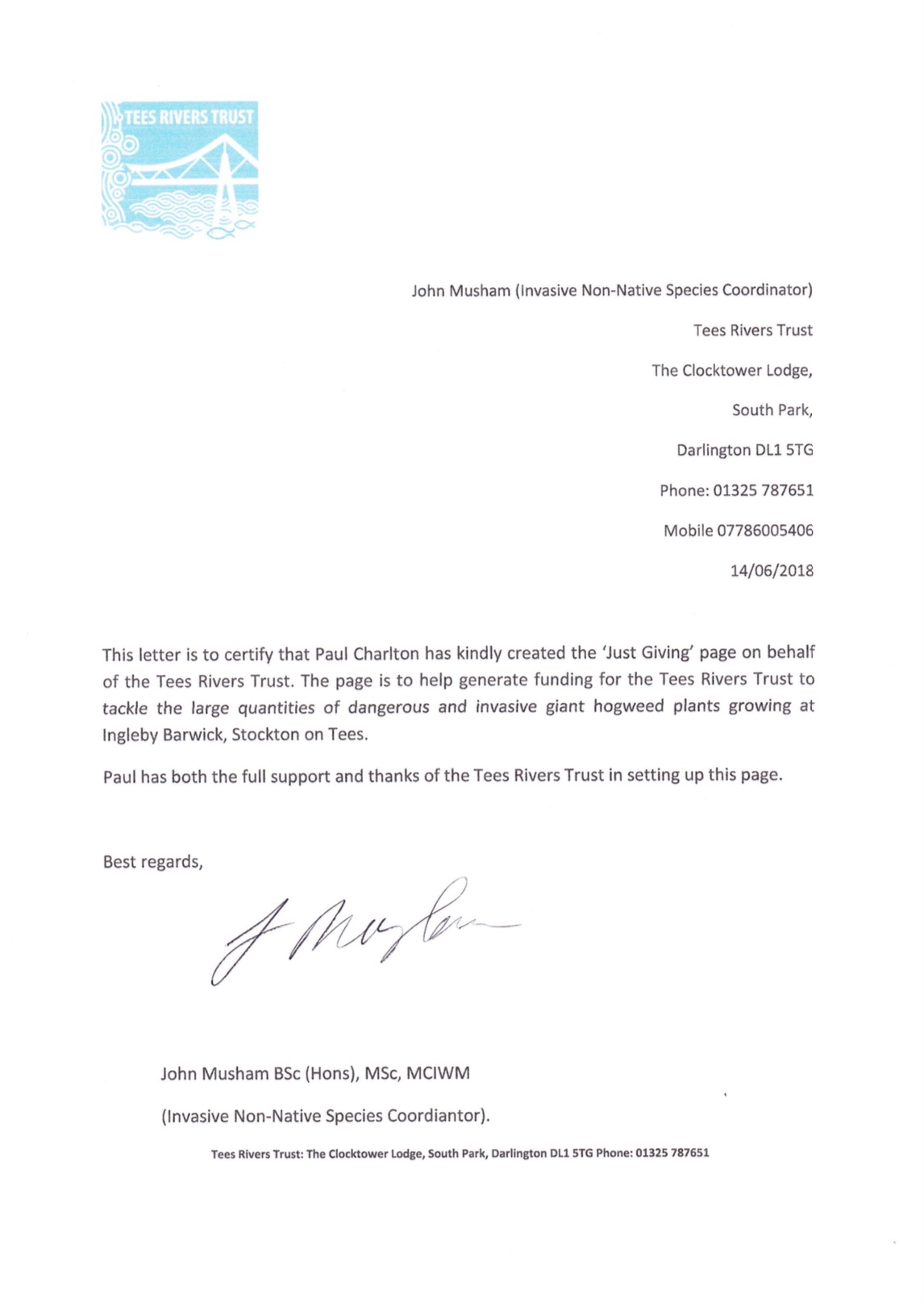
We need your help!
Giant Hogweed is spreading very quickly in all of the remaining green spaces on Ingleby Barwick. Many of you who walk along the river will have no doubt come across it. It has been a problem for years but unfortunately the problem is getting worse. Tees River Trust do not have enough money to combat the serious problem. Due to local authority cuts they are unable to provide any funding. I live in Ingleby Barwick and know what a fantastic community we have. If half the population of the estate donated just £1 we could help get rid of it for good!
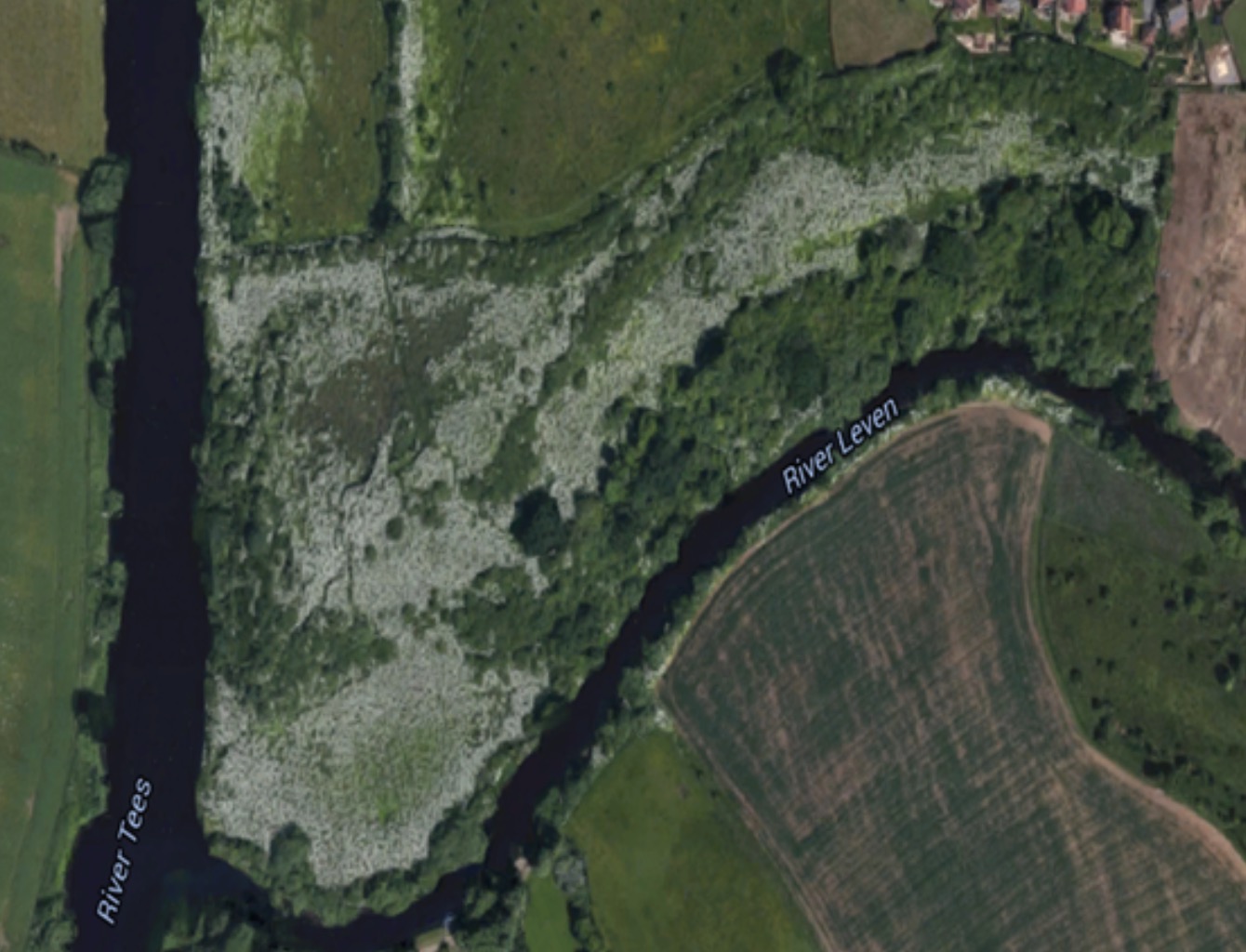
Giant Hogweed is a large toxic plant. It is present along large stretches of the rivers Tees, Skerne and Leven. However, the largest infested area is at Bettys Farm (Round Hill site) Ingleby Barwick.
The Tees Rivers Trust has been tackling giant hogweed on this privately owned 22 hectare site (which is to be handed over to Stockton council), for the past four years. It costs the Trust approximately £3700 each year to carry out the work. Although they have an excellent group of volunteers, some local to Ingleby Barwick and Kirklevington, with limited funds this level of work is difficult to maintain. One giant hogweed plant can produce between 20,000 – 50,000 seeds, some of which can remain viable for up to 15 years. It is estimated that parts of the Round Hill site has approximately 12,000 seeds per square metre, making its control a long-term commitment.
The dangers of giant hogweed
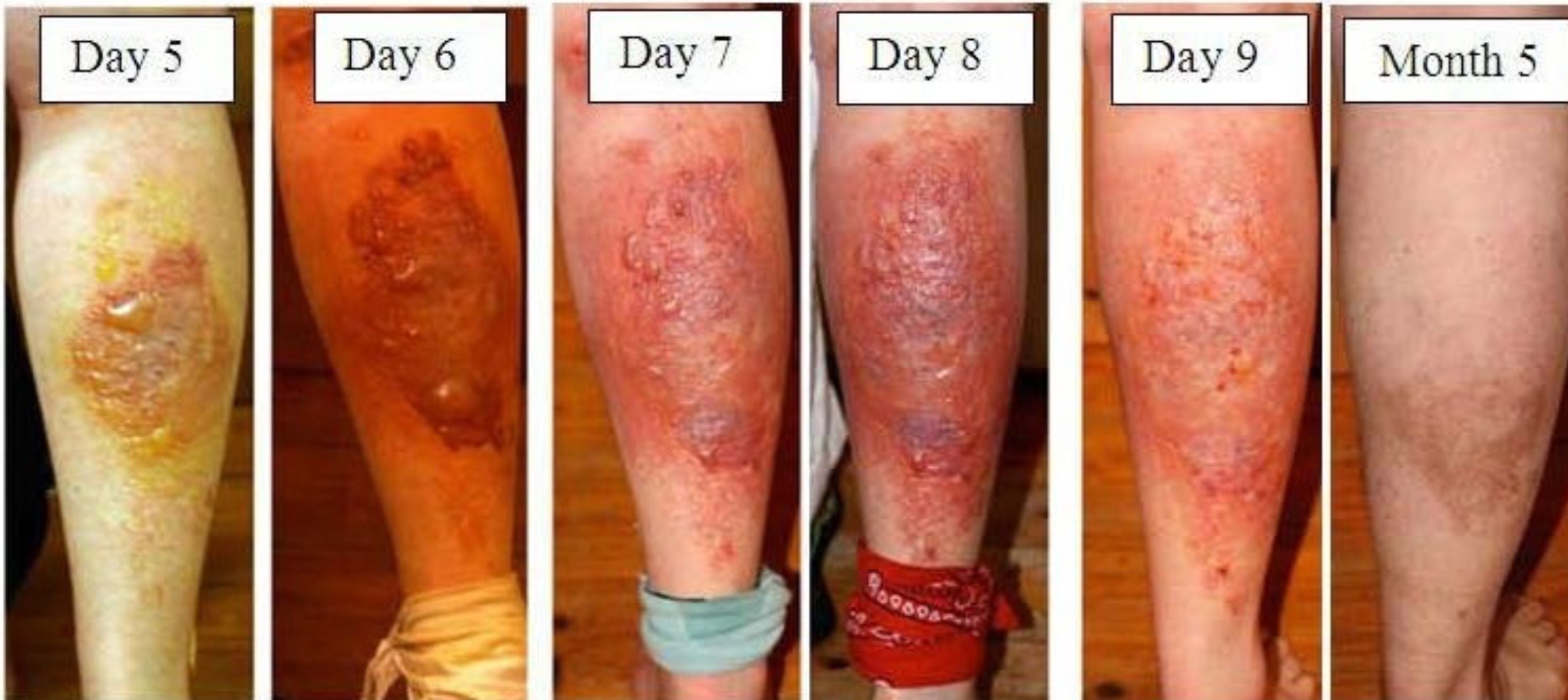
The sap of giant hogweed contains toxic sap that can cause severe burns. ... When these come into contact with the skin, and in the presence of sunlight, they cause a condition called phyto-photodermatitis: a reddening of the skin, often followed by painful and severe burns and blistering. The effects can last for several months or even years.
If you do touch Giant Hogweed the best course of action is to cover the affected area from sunlight and wash it with soap and water as soon as possible.
• Wash the affected area thoroughly with soap and COLD water as soon as possible.
• Keep the exposed area away from sunlight for at least 48 hours and wear sun protector.
• If hogweed sap gets into the eyes, rinse them with water and wear sunglasses.
• Wash any clothing which comes in contact with giant hogweed.
• In all cases seek medical advice.
Giant hogweed
At a forum organised by the Trust In 2015, which was attended by local authorities, the Environment Agency, local businesses, interest groups and volunteers, we asked the question -what do you see as the main aim of future invasive species work within the catchment?. The overwhelming response was ‘tackling giant hogweed,’ it is seen as the most dangerous invasive species, restricting access and usage to parts of the countryside as well as posing a significant danger to river users, local communities and visitors.
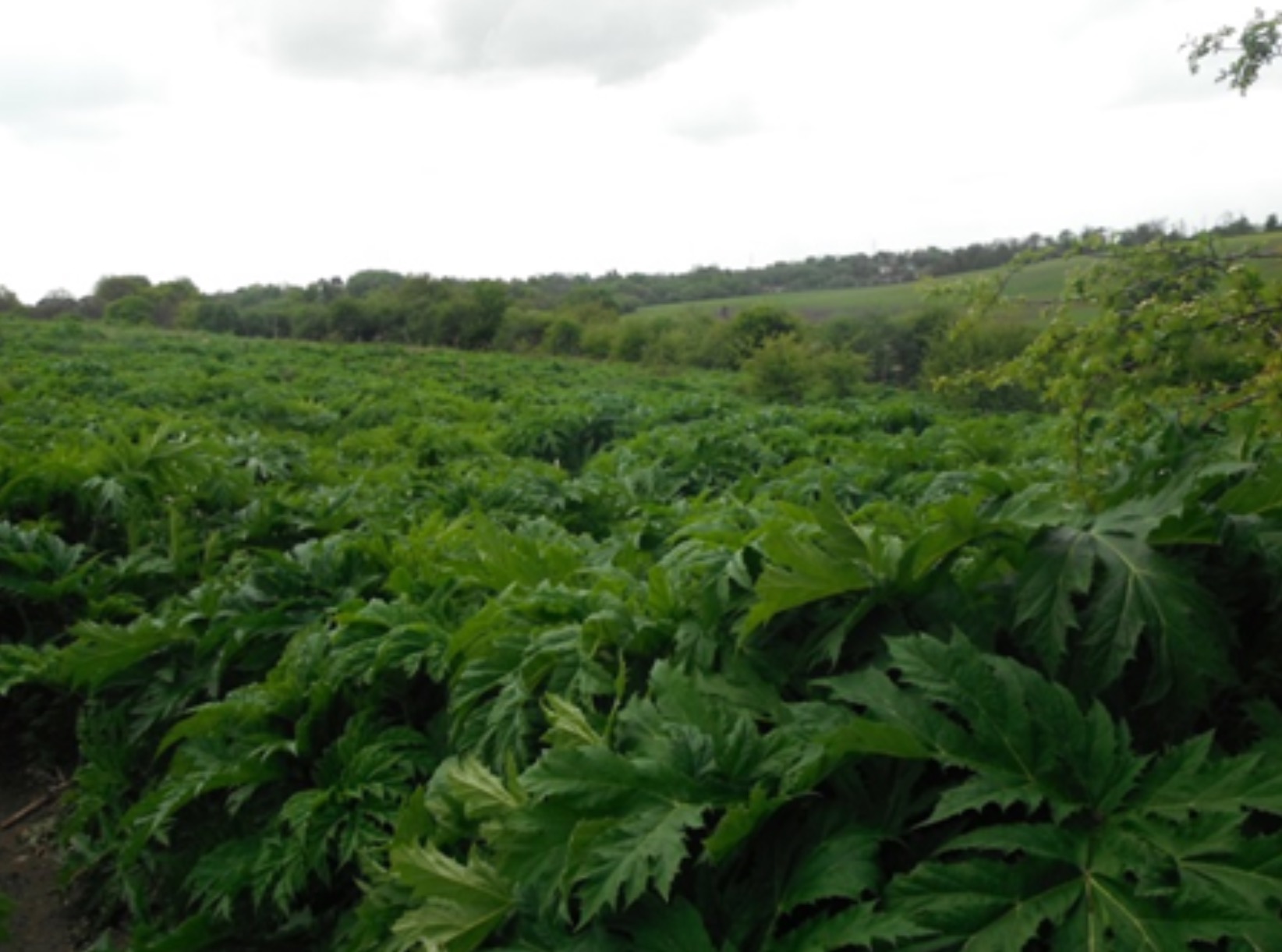
In June 2017, Tees Rivers Trust gained funding from Heritage Lottery Fund to carry out a one year development project to secure landowners permissions, map giant hogweed distributions and develop a strategy for the removal of this invasive and harmful plant and to actively restore a more natural biodiversity. Ingleby Barwick will play an important part in the success of giant hogweed removal within the Tees catchment area.
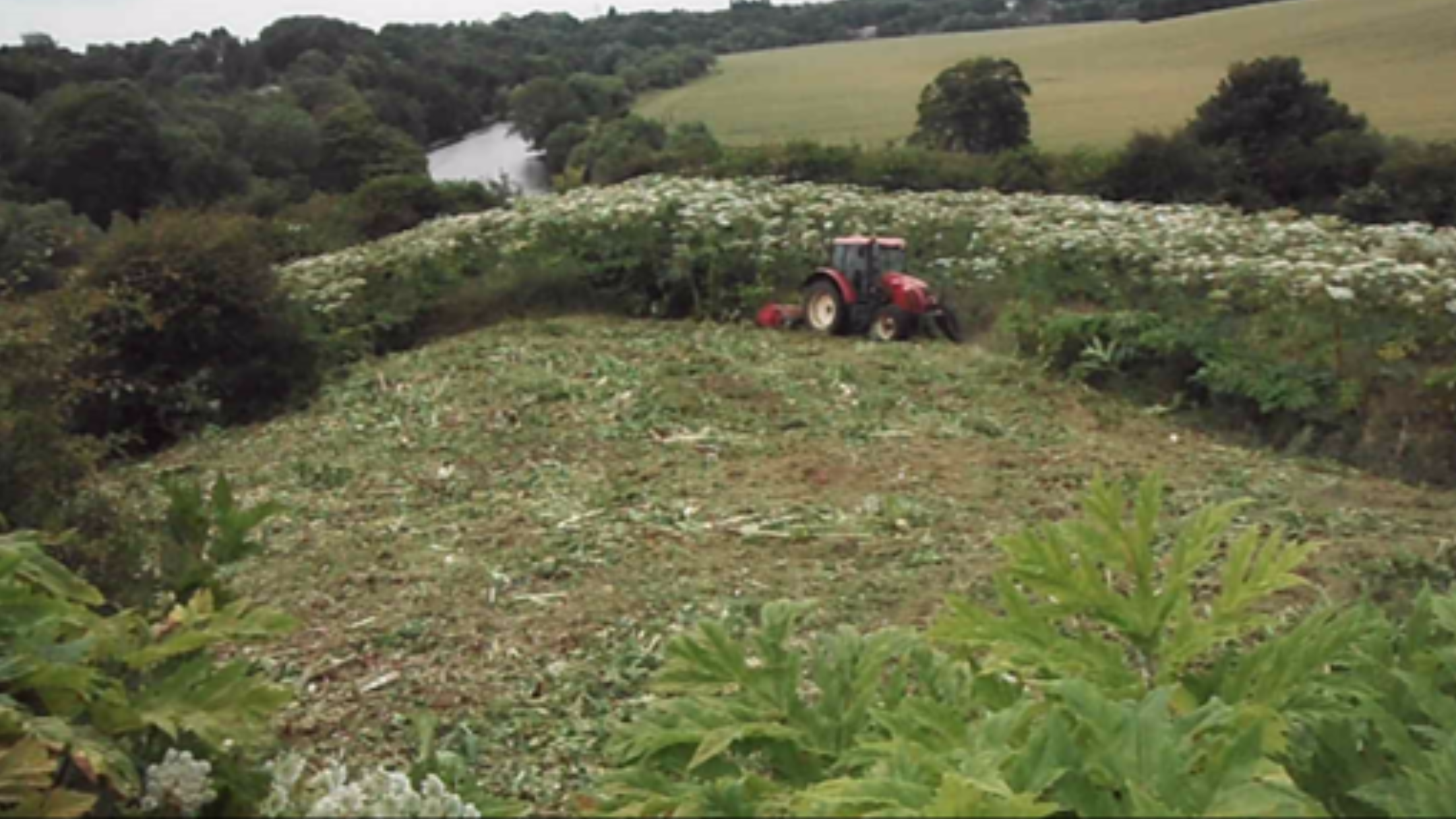
A